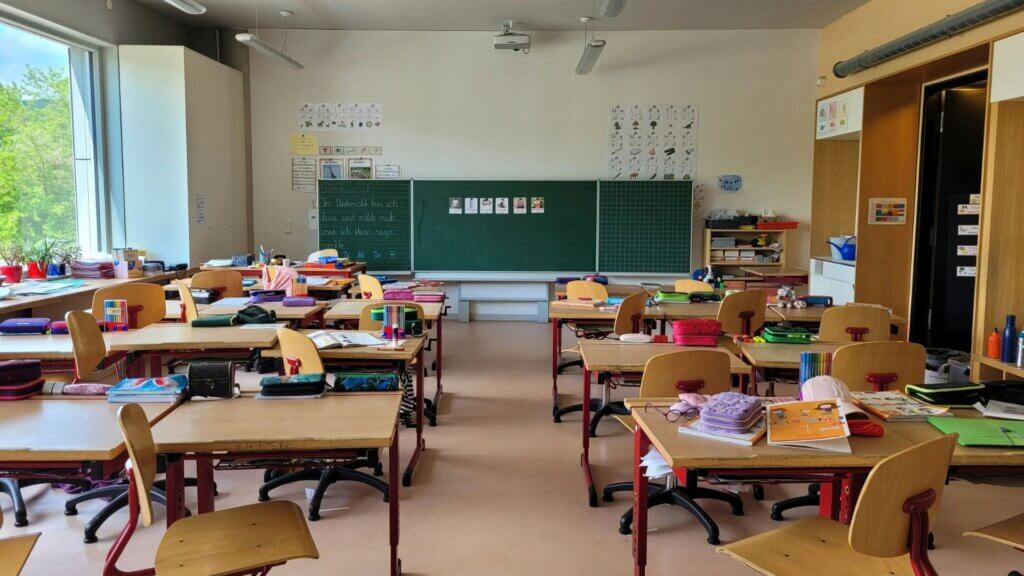Products are selected by our editors, we may earn commission from links on this page.

Across classrooms in the United States, an unexpected phrase has sparked confusion, laughter, and frustration in equal measure. The slang “67” has spread rapidly among students, and many teachers are now enforcing strict rules to stop it. What began as a harmless inside joke has turned into a classroom distraction that few educators find amusing anymore.
A Phrase That Tested Patience

For Michigan teacher Adria Laplander, the slang “67” represents a breaking point. In more than twenty years of teaching, she has heard countless forms of slang, yet none have disrupted her classes quite like this one. After repeated interruptions, she decided to ban it entirely. Her rule is clear, if a student says “67,” they must write a 67-word essay explaining its meaning, and the more they repeat the offense, the longer the essay becomes.
Tracing the Origin

The expression itself carries no real meaning. “Six seven,” or “67,” is connected to a rap song and a basketball player who stands six feet seven inches tall. Among teens and preteens, it is used as a joke, a filler, or even a chant. When one student calls out “6,” others instinctively answer “7,” turning ordinary classroom moments into spontaneous games that often derail lessons.
When Numbers Cause Chaos

Avoiding the phrase is harder than it seems. Teachers have found themselves triggering laughter without realizing it. While taking attendance or counting aloud, simply saying the numbers six and seven can unleash an instant “67” chorus. One teacher shared on TikTok that she was calmly reading numbers when her entire class erupted in laughter. What was once a small inside joke quickly grew into a viral classroom trend.
Creative Consequences

Some educators have turned to humor and discipline combined. A math teacher on TikTok told her class that anyone who says “67” will lose exactly 67 digital behavior points. Her reasoning was simple, to help students build self-control and understand that classroom participation comes with responsibility. The exaggerated consequence got her students’ attention and, for many, was a wake-up call to think before speaking.
Laplander’s Method for Restoring Order

For Laplander, writing essays is more than a punishment, it is a way to restore focus and reflection in her classroom. She believes that encouraging students to think critically about their actions can transform disruptive moments into learning opportunities. Still, not all students have learned their lesson. Some now stand outside her classroom door shouting “67,” testing her patience just for fun. “They want to push buttons,” she admits, half amused, half exasperated.
The Role of Slang in Connection

Laplander acknowledges that slang can be an effective way to connect with young people. Shared language helps build trust and engagement. However, she insists that there is a clear boundary between creativity and disruption. “We don’t have the right to interrupt other people’s learning,” she explains. Her words reflect a balance many teachers strive to maintain, one that allows self-expression without sacrificing order.
A New Jersey Perspective

Fourth-grade teacher Monica Choflet in New Jersey has faced the same challenge. In her class, any mention of the numbers six or seven can cause instant laughter. “I could say it’s 1:16 p.m., time for class, and someone will still yell ‘67!’” she says. To manage the distraction, she introduced a system that turns the joke into a lesson about responsibility, transforming frustration into a learning tool.
Turning Disruption Into Discipline

Choflet’s approach is simple and clever. If a student interrupts with “67,” they must write lines as homework. The first offense earns six lines, the second earns seven, and the third earns sixty-seven. This system, suggested by one of her own students, encourages mindfulness and adds a sense of fairness to the process. When students realized she was serious, the laughter quickly turned into quiet respect.
Finding Humor in the Challenge

Despite the inconvenience, some teachers have learned to see the humor in it all. Choflet recalls attending a Bingo fundraiser with a colleague when the announcer called “G-67.” Both teachers looked at each other and smiled, quietly repeating “67.” It became a lighthearted reminder that even the most frustrating trends can unite educators and students through shared experiences.
A Lesson Hidden in the Numbers

The “67” phenomenon highlights how language among young people evolves in unpredictable ways. A meaningless phrase can transform into a cultural signal, a form of rebellion, and even a teaching opportunity. For teachers, it is a reminder that patience, creativity, and humor are essential tools in guiding students. In the end, “67” is less about numbers and more about understanding how kids find their voice within the rules that shape their world.

